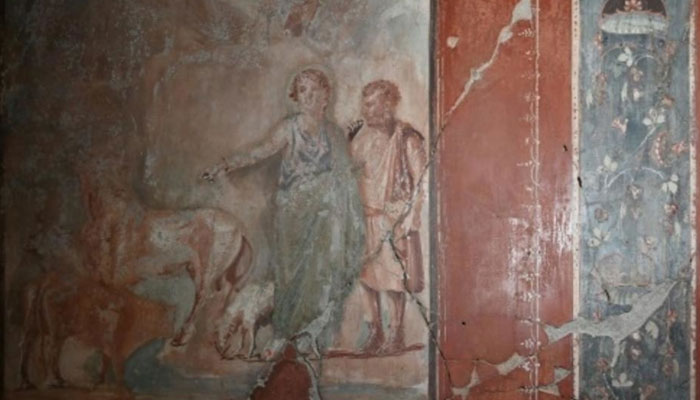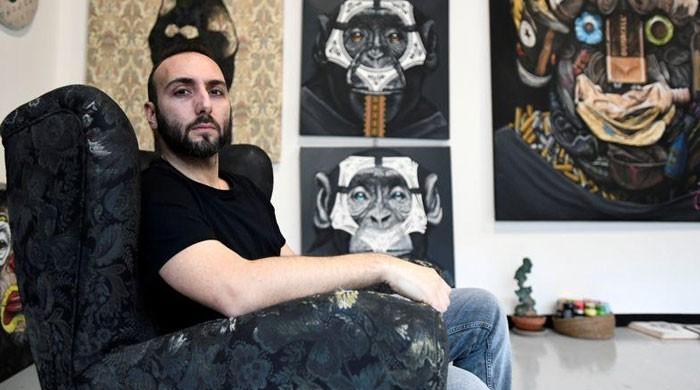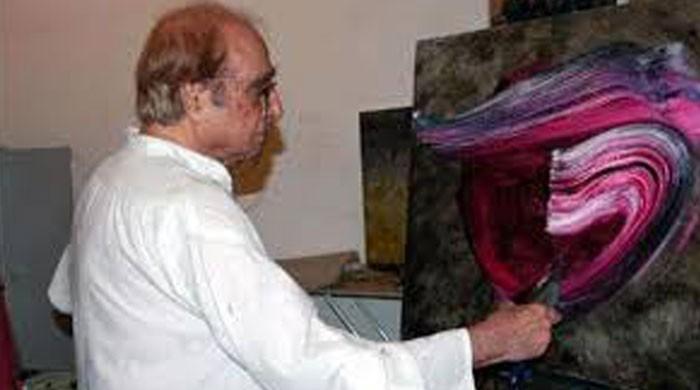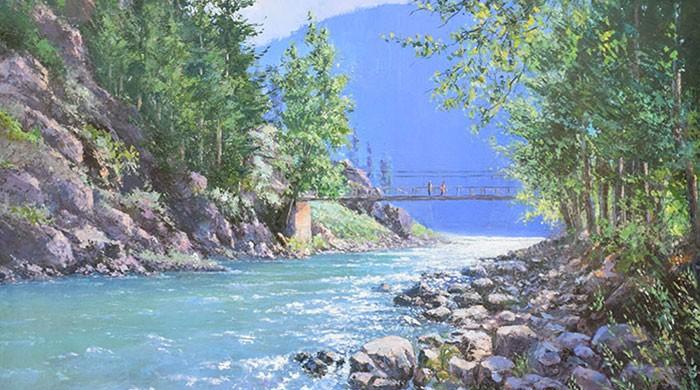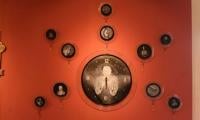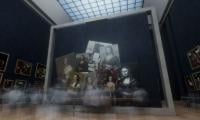New technique reveals lost splendours of Herculaneum art
Herculaneum was buried under at least 15 metres (almost 50 foot) of rock, much more than the around four metres of ash at Pompeii, which for years made Herculaneum less attractive to looters and archaeologists alike.
ERCOLANO: One of the best preserved Roman houses at Herculaneum reopened on Wednesday after more than 30 years, its exquisite paintings brought back to life thanks to a revolutionary new technique.
The three-storey House of the Bicentenary is perhaps the most beautiful noble house so far excavated from under the pyroclastic flow that entombed Herculaneum in the devastating 79 AD eruption of Mount Vesuvius that also destroyed nearby Pompeii.
Although much smaller than its better known neighbour outside the southern Italian city Naples, Herculaneum was a wealthier town with more exquisite architecture, much of which is still to be uncovered.
Herculaneum was buried under at least 15 metres (almost 50 foot) of rock, much more than the around four metres of ash at Pompeii, which for years made Herculaneum less attractive to looters and archaeologists alike.
The Bicentenary house, which also features stunning mosaics, gets its name from the fact that it was re-discovered in 1938, exactly 200 years after official excavations began at the site under the Bourbon monarchy.
The 600-square-metre (6,400-square-feet) building was closed to the public in 1983 as it began to fall apart, including its priceless wall paintings in the Tablinum, the room traditionally used by the father of the house for business and to receive clients.
Conservationists focused on two large mythological scenes, one of Venus and Mars and one of Daedalus and Pasiphae, and paintings of a variety of other Dionysian themes common to the homes of Herculaneum´s wealthy inhabitants.
- ´Most beautiful´ -
"The reason we chose this room to study and conserve is because the wall paintings here are some of the most beautiful at the site, but also some of the most severely deteriorated," said Leslie Rainer, wall painting conservator from the Getty Conservation Institute.
Black and white photos of the paintings from 1938 show remarkably well-preserved images, but they had almost disappeared before the latest restoration work began.
"The wall paintings are so significant that it was a terrible shame to see them so deteriorated and not to have solutions for how to conserve them properly," Rainer told AFP.
The house became a laboratory for finding "new innovative treatment methods and materials that can be used here but also applied around the site and in the region for wall paintings that have similar conservation issues," said Rainer.
- ´Flaking and powdering´ -
Not only was the room left exposed to the elements after it was excavated, but wax was applied to the paintings in a well-meaning but ultimately misguided attempt to preserve them.
"The combination of the dramatic environmental fluctuations with the wax covering the wall paintings led them to be pulled up and so they were flaking and powdering, so we had to find solutions."
After experimenting with different methods to try to preserve the paint and also remove the wax, a non-organic rigid gel solution was found and "we were able to actually remove that wax layer and have a stable paint layer underneath," Rainer said.
The wax method was used widely throughout the region and threatens the survival of many of the artworks it was meant to protect, but the experts working on the Bicentenary House hope this technique can be used to save them once its details are published.
"We hope that professionals can use this method for wall paintings that show similar issues around the whole region," said Rainer, as conservationists apply vivid colours to the newly revealed surfaces around her.
-
Rare Gauguin fetches 9.5 mn euros at Paris auction
-
Vibrant compositions
-
Artist Mashkoor Raza's bold and soft compositions
-
Sanki King brings a burst of energy in graffiti
-
Remembering the forgotten
-
‘Being Edhi’ – means to serve humanity
-
Louvre offers virtual ´tete-a-tete´ with the Mona Lisa
-
Traditional 'unnatural selection'
